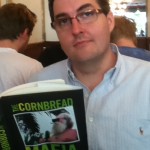Blogging the PEN World Voices Festival April 30-May 6
 As a member of the estimable literary advocacy organization the PEN American Center I attended a number of events during the PEN World Voices Festival of International Literature last May and reported on some of them for the PEN blog*. More than two dozen PEN members have accepted the invitation to become Festival Correspondents this spring and I’m excited I’ll again be one of them. We’ll be posting to a friendly new tumblr platform** and fanning out all over the city to participate in and cover the fifty-event literary smorgasbord with nearly 100 novelists, poets, playwrights, translators, critics, and editors from dozens of countries. There are many highlights on the program, including two with women writers that I’ll be covering on Thursday, May 3. In the first, Margaret Atwood will be discussing The Writer’s Mind and the Digital Otherworld with longtime editor and friend Amy Grace Lloyd. In 2005, I published a book with Margaret, Writing with Intent: Essays, Reviews, Personal Prose 1983-2005, a collection of fifty-eight pieces of her criticism and literary journalism, so it should be fascinating to hear her examine such questions as “What does it mean to write with the Web? and “How does our constant access to information and ideas affect the landscape of imagination?” The second program will be Understanding Egypt with the courageous Mona Eltahawy who I wrote about on this blog, in The Broken Bones of Mona Eltahawy, after she was beaten by Egyptian security forces, later re-gaining her freedom in in part because of global online protests, especially on Twitter.
As a member of the estimable literary advocacy organization the PEN American Center I attended a number of events during the PEN World Voices Festival of International Literature last May and reported on some of them for the PEN blog*. More than two dozen PEN members have accepted the invitation to become Festival Correspondents this spring and I’m excited I’ll again be one of them. We’ll be posting to a friendly new tumblr platform** and fanning out all over the city to participate in and cover the fifty-event literary smorgasbord with nearly 100 novelists, poets, playwrights, translators, critics, and editors from dozens of countries. There are many highlights on the program, including two with women writers that I’ll be covering on Thursday, May 3. In the first, Margaret Atwood will be discussing The Writer’s Mind and the Digital Otherworld with longtime editor and friend Amy Grace Lloyd. In 2005, I published a book with Margaret, Writing with Intent: Essays, Reviews, Personal Prose 1983-2005, a collection of fifty-eight pieces of her criticism and literary journalism, so it should be fascinating to hear her examine such questions as “What does it mean to write with the Web? and “How does our constant access to information and ideas affect the landscape of imagination?” The second program will be Understanding Egypt with the courageous Mona Eltahawy who I wrote about on this blog, in The Broken Bones of Mona Eltahawy, after she was beaten by Egyptian security forces, later re-gaining her freedom in in part because of global online protests, especially on Twitter.
These ticketed events will be held at the New School’s Tishman Auditorium, beginning at 6 PM and 8 PM respectively. I invite you to attend one or both of these talks. Make an evening of it! If you do choose to attend, or end up at another event during the week, please say hello. PEN encourages active literary citizenship so if you are a writing or publishing professional, and have been considering getting involved, I suggest you do so. The international and domestic work PEN does on behalf of free expression is extremely effective and important.
For my readers’ convenience, here again is a link to the Festival program.
*My coverage from PEN World Voices in 2011: 1) Getting Real with Superheroes (which was also published with PW Comics World on the Publishers Weekly website) and 2) Summoning Ghosts at The Standard
**To read the PEN World Voices Festival tumblr please use this link. The Twitter hashtag for the festival will be #PENFest12. As soon as my full schedule for the week is available I will share it here. Meantime, here is my newly updated PEN member profile page.
// click through on share link below to see photo of Mona Eltahaway . . . //

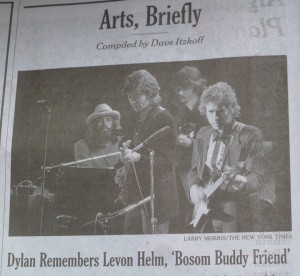
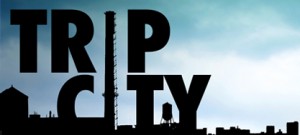


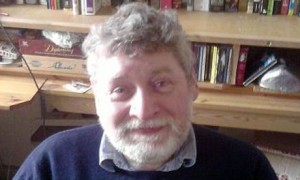 Via the Guardian comes a lovely memorial by longtime British publisher
Via the Guardian comes a lovely memorial by longtime British publisher 
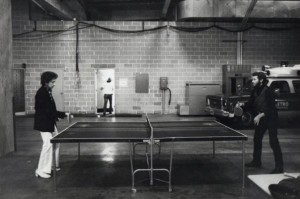 Among the pieces of journalism and commentary I’ve read about Levon Helm since word of his terminal condition was released by his family last week, and then since his death on Thursday,
Among the pieces of journalism and commentary I’ve read about Levon Helm since word of his terminal condition was released by his family last week, and then since his death on Thursday,  Wednesday night was another great night for live music by Canadian artists in New York City. First stop on the evening’s program was Joe’s Pub to hear
Wednesday night was another great night for live music by Canadian artists in New York City. First stop on the evening’s program was Joe’s Pub to hear This morning I met an author whose work I really admire. My breakfast mate was Jim Higdon, author of The Cornbread Mafia: A Homegrown Syndicate’s Code of Silence and the Biggest Marijuana Bust in American History, which is officially released tomorrow. I’d never met Jim, though I had a role in insuring that his book had a chance to get published. When I read the draft manuscript I wasn’t in a position to publish it myself, but I really enjoyed this gonzo true-crime narrative, and so recommended it to longtime Carroll & Graf colleague and friend, Keith Wallman, now an editor at Lyons Press. It was precisely the sort of book he and I combined to edit and prepare for publication many times, with books like David Pietrusza’s Rothstein: The Life, Times, and and Murder of the Criminal Mastermind Who Fixed the 1919 World Series; Barbara Raymond’s The Baby Thief: The Untold Story of Georgia Tann, the Baby Seller Who Corrupted Adoption; Alan Bisbort’s “When You Read This, They Will Have Killed Me”: The Life, Redemption, and Execution of Caryl Chessman, Whose Execution Shook America; and Chuck Kinder’s Last Mountain Dancer: Hard-Earned Lessons in Love, Loss, and Outlaw Honky-Tonk Life, to name only four of many dozen books we published together.
This morning I met an author whose work I really admire. My breakfast mate was Jim Higdon, author of The Cornbread Mafia: A Homegrown Syndicate’s Code of Silence and the Biggest Marijuana Bust in American History, which is officially released tomorrow. I’d never met Jim, though I had a role in insuring that his book had a chance to get published. When I read the draft manuscript I wasn’t in a position to publish it myself, but I really enjoyed this gonzo true-crime narrative, and so recommended it to longtime Carroll & Graf colleague and friend, Keith Wallman, now an editor at Lyons Press. It was precisely the sort of book he and I combined to edit and prepare for publication many times, with books like David Pietrusza’s Rothstein: The Life, Times, and and Murder of the Criminal Mastermind Who Fixed the 1919 World Series; Barbara Raymond’s The Baby Thief: The Untold Story of Georgia Tann, the Baby Seller Who Corrupted Adoption; Alan Bisbort’s “When You Read This, They Will Have Killed Me”: The Life, Redemption, and Execution of Caryl Chessman, Whose Execution Shook America; and Chuck Kinder’s Last Mountain Dancer: Hard-Earned Lessons in Love, Loss, and Outlaw Honky-Tonk Life, to name only four of many dozen books we published together.